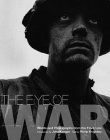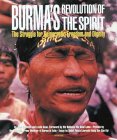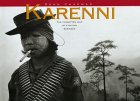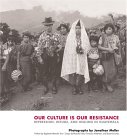The photographs taken during each war show us the popular concerns of the day and reflect the morays of society at large. The
American Civil War (1861-1865) can be seen through works of fiction such as Stephen Crane's
'The Red Badge of Courage' or Charles Frazier's
'Cold Mountain' or the writings of Shelby Foote. The
Vietnam War (1961-1975) can be viewed through the contemporary diaries of Michael Herr in
'Dispatches'. Research and interviews of what actually happened during a mission in Somalia that went terribly wrong as in Mark Bowden's
'Black Hawk Down: A Story of Modern War' gives us insights. Both fictional and non-fictional works help us to understand a conflict and the attitudes that go with it - photographs take us there to show us the brutal reality of experience. They place us amid circumstances that nobody should ever see and yet a single shutter click of a 1000th of a second amidst the chaos of years can sum up an entire war and arouse public indignation.
In the sections on the different wars these issues are dealt with in detail and examples of the key images and the people who took them are provided. Here before we go into those I'd like to highlight the broader trends so that they can be better understood.
Shooting Under Fire: The World of the War Photographer
Peter Howe |  |
|
| |
The Eye of War: Words and Photographs from the Front Line
Phillip Knightley (Author); John Keegan (Introduction); & Sarah Jackson (Editor) |  |
|
|
During the
Boer War (1899-1902) that was a conflict in Southern Africa between the British Empire and the Dutch Boers who were seeking independence at the battle of Spion Kop in the Natal a Boer photographer took photographs of the British dead as a propaganda tool. These photographs were double edged as they showed that the British army could be defeated and at the same time they raised morale amongst the Boers. Images of the dead had been showed during the
American Civil War (1861-1865) but they were not consciously used for propaganda rather as a record of what had occurred.
| During the American Civil War (1861-1865) the cameras were not able to photograph movement with any fidelity and therefore more static subject were selected. The dead were a natural if macabre choice but there has been considerable discussion about the placement of the dead so that they provided the best visual composition. A contemporary account reveals that Felice Beato (ca.1825-ca.1908) did the same in some of his photographs of the Second Chinese Opium War (1856-1860). | | [Checklist] | Click on image for details
[Copyright and Fair Use Issues] |
|
National newspapers in uncensored countries walk a tight path during times of war and have to question whether it is right to include photographs of their
'fallen'. At the height of the
First World War (1914-1918) the front page of the French newspaper
'Le Miroir' published a photograph of the bodies of a German and a Frenchman propped up against each other. It was a devastating indictment on the futility of war.
Sensitivities about the heroic dead raise emotions in a time of war and it was not until 1943 that the USA published photographs of dead American soldiers. On 20 September 1943
LIFE magazine included a stark 1942 photograph of three dead marines on Buna Beach in Papua New Guinea taken by George Strock during the
Second World War (1939-1946), the power of the image meant that the magazine felt compelled to explain why it had been included in an adjacent full-page editorial. Opinions were divided on whether it was appropriate but the influential
Washington Post said that the pictures "can help us to understand something of what has been sacrificed for the victories we have won."
The symbolism of the dead to create a political backlash is well appreciated by governments and during the
Second Gulf War (2003-) attempts were made by the US government to prevent the publication of any arrivals of flag draped coffins or military funerals. When a cargo worker, Tami Silicio, took photographs of the flag draped coffins at Dover Airforce Base she said she did it to show the respect that was paid to the dead - the government did everything it could to prevent any other images being distributed.
| The debate continues over whether the casualties of war should be shown |
|
The attitude to censorship has varied over time and space. During the
Second World War the American President Franklin Delano Roosevelt lifted censorship because he wanted the public to appreciate the hardship and the losses made on their behalf. In the
Vietnam War the open access to the battlefields meant that haunting images were shown and this may have been a contributing factor to sapping the will of the public to continue the war. All was not open in
Vietnam and the bombing of Cambodia was not widely reported to the American public. The images of the
Vietnam War weighed heavily upon political and military strategists and resulted in making the battlefields off limits to non-combat personnel in the British-Argentinean
Falklands War and the
First Gulf War - leaving history largely bereft of image sources that were not taken for official purposes. This changed again in the
Second Gulf War with very liberal rules for
'embedded' journalists who were with the frontline troops and could witness war as it actually is.
During the
American Civil War (1861-1865) there is a particularly well known case of a faked battlefield photograph and the
Spanish-American War (1898) was a media created war that was initiated by Randolph Hearst as part of a newspaper circulation battle. During this appalling misuse of the power of the media engravings showing the sinking of the American battleship U.S.S. Maine by the Spaniards were issued as fact and films of the battles were made in America rather than on the actual battlefields. The real highlight of the faked photograph came in Soviet Russia when personalities who were out of favor with Stalin simply disappeared from the historical record by being erased from photographs in an Orwellian manner.
Each side during a conflict seeks to justify their actions by demonstrating that their side has moral superiority and therefore a 'god-given' right to win. It does this by promoting images that degrade the enemy or demonstrate seemingly super-human heroic actions by individuals that show by examine why right is on our side rather than theirs.
In reviewing images of the
First World War amongst all the pictures of devastation one will find images of a soldier carrying another wounded or gassed soldier back to a medical unit.
The photograph of the soldier carrying the wounded baby in the Pacific War during
Second World War by
W. Eugene Smith shows a fleeting attempt to do something humane in a time that rarely allows it. The fact that the circumstances are only partially known and the child died does little to take away from the power of an image that transcends the time and place to reveal a sanctity to the action.
In all wars there will be acts of humanity that demonstrate that people have the ability to rise above their baser instincts to be truly noble.
When we examine the photographs that reveal the civilian costs of war these can be organized into a series of distinct piles. This may seem a brutal way to deal with images of material and social destruction but follow my argument for a moment. The basic piles can be divided up into:
- Remote impact
Here during the American Civil War (1861-1865) we can see the burnt out warehouses and ruined cities. The cities are largely without people and show the remaining chimney stacks and unsupported blackened walls of disintegrating buildings. The casual observer would find little to distinguish the cities of the Confederacy from the photographs of 1870 Strasbourg taken during the Franco-Prussian War (1870-71). Indeed moving forward during the First World War large numbers of picture postcards of towns such as Ypres and Arras were sold showing similar cities. The only real difference is in the explosive power of the weapons used to create the devastation. By the Second World War with the blanket bombing of civilian centers such as Coventry, Dresden, Tokyo and innumerable others - the aerial photographs of the ruins somehow remove us from what actually happened. We see bricks, tiles and splintered wood rather than the bodies beneath them.
- Near distance impact
We better comprehend what actually happens during war when confronted by images of those that have directly suffered its consequences. They are not the fighters but the civilians whose lives are dragged into turmoil by the battles that surround them. When Adrian J. Ebell photographed the refugees from the Indian attacks on the Northern Plains that led to the First Indian War he understood their meaning. Illustrations based on the photographs were published in 1863 in 'Harper's New Monthly Magazine' and forced political action. Single images such as the young naked girl running from exploding napalm in the Vietnam War bring home real events in the way words rarely can. We are surrounded by images of the bus bomb victims in Israel and the reactive 'collateral damage' on civilians of the targeted assassinations of Palestinians by the IDF.
- Full impact
Alongside the fates of individuals there are the fates of entire peoples and ethnic groups who have been persecuted and massacred because of race hatred, jealousy and bigotry. The genocide of Armenian Massacres (1915-23) left little photographic evidence whereas the Holocaust of the Second World War left so much that one would have to be unbalanced or prejudiced to question its veracity. Through our lives genocides continue - the 1994 Rwandan genocide with its hatreds that continue with massacres in Burundi, Congo and Rwanda, the Killing Fields of Cambodia, the 1982 Lebanese Christian Phalangist militia massacres in the Beirut refugee camps of Sabra and Shatila (Chatila), the massacres during the Balkan wars carried out by Serbian forces at Vukovar in 1991 and Srebrenica in 1995.
Whole massacres have been blamed on others for political expediency. The execution of the 4,443 Polish officers whose bodies were disinterred from the Katyn Forest by the Germans in 1943 and Radio Berlin broadcast "a most horrific discovery" on 13 April 1943 claiming the Russian forces had done it - it was over 45 years later on 7 March 1989 that the Polish Government finally revealed that the Soviet NKVD under Stalin's orders had killed them whereas previously it was claimed that the German Army was responsible.
Photojournalists bring the civilian causalities of war and the displaced people into our secure homes and pose uncomfortable questions about our humanity. The truly great photographs leave scars upon our memories that never heal.
The Native Americans at the Battle of the Little Big Horn did not take photographers with them and so history records the event from the photographs of the battlefield taken later or from historical accounts. Those that have the best technologies and communication methods preserve history and the myths that go along with it. We have hardly any photographic evidence of the
Armenian Massacres (1915-23) because there were few photographers to record it. The same is true of
Falklands War and the vast armored battle of VII Corps (under Lt. Gen. Frederick M. Franks, Jr.,) in late February 1991 during the
First Gulf War because of restricted access to the war zone. Other wars and genocides such as the Killing Fields of Cambodia and the Rwandan Massacre took place in oppressive regimes where images needed to be taken covertly or after the event as it is too dangerous at the time. In
Chechnya photojournalists are seen as fair game by all sides and the bravery of those that try to get the images out is extraordinary. When
Michael von Graffenried took covert photographs during the
Algerian Civil War of the 1990's he risked his life with every shot he took.
The historical and linguistic associations between countries lead to different media coverage and access. The
Falklands War was of great interest in Britain and Argentina but of far less interest elsewhere, the
Algerian War of Independence in the 1950s was a liberation struggle against French colonialism and the legacy of that meant that the brutal internal struggles in
Algerian Civil War (1991-) were of more interest in France because it was a former colony and there are strong ties because of the large Algerian population in France. The newspapers and magazines with the strongest ties of interest will send more of their own photographers and will use more images from the photo agencies that have the best access.
| Burma | Burma's Revolution of the Spirit: The Struggle for Democratic Freedom and Dignity
Alan Clements; Leslie Kean; & Sein Win (Preface) |  |
|
| |
| Burma | Karenni: The Forgotten War of a Nation Under Siege
Dean Chapman |  |
|
|
| Tibet | Tibet Since 1950: Silence, Prison or Exile
Elliot Sperling (Introduction); Steven Marshall (Contributor); & Orville Schell (Contributor) |  |
|
| |
| Guatemala | Our Culture is our Resistance: Repression, Refuge, and Healing in Guatemala
Jonathan Moller (Photographer); Rigoberta Mench˙ Tum (Preface); Ricardo Falla (Essay); & Susanne Jonas (Essay) |  |
|
|
Ongoing repression and independence struggles continue in many parts of the world but are a background hum in news stories - rarely do the images from these wars get published or appear in the news outside of their local region.
Until the development of lighter cameras by necessity the plates were incapable of showing clearly the immediacy of war and so the cannon ball strewn fields of the
Crimean War, the barricaded streets of the
Paris Commune, the stiff portraits of military commanders having a meeting in the
American Civil War (1861-1865) show facets of multi-faceted events. As technology improves so more facets are shown only to be obscured at times by restricted access or censorship. Sometimes an additional facet is falsely revealed by a faked photograph. By the
Spanish Civil War and the
Second World War large numbers of active participants and civilians had cameras and filled albums with personal histories - there were also increasing numbers of official photographers assigned to military units on all sides alongside the accredited photojournalists. Cameras were now highly portable and this allowed photographers to blend in with the troops. The lack of control of images is becoming a major concern to armies because of the potential for uncontrolled information leakage - frankly this is of far more concern to democratic countries with relatively free media because of the political fallout. When army photographer Ronald Haeberle took the photographs at My Lai in
Vietnam did he fully appreciate the effect it would have later on the war as a whole? When Tami Silicio, a Maytag Aircraft cargo worker, during the
Second Gulf War (2003-) took photos of flag draped coffins aboard a cargo plane she did it to show the respect that the fallen were given - the fact that she lost her job and all further photographs were restricted was to prevent political damage in direct contrast to what FDR had believed during the
Second World War. The new generations of camera phones will become a nightmare as they are increasingly integrated into the internet allowing anybody to upload photographs immediately. A photograph taken supposedly to humiliate a prisoner in an Iraqi jail following the
Second Gulf War will become an icon for hundreds of years.
| Technologies to improve night vision capabilities have existed since the end of the Second World War where they were used by the German, American and British forces for enhancing the vision of snipers. The early systems used a near-infrared (NIR) light source that reflected the target back to the scope where an image tube enhanced the image. By the 1950's the US Army had established the 'Army Night Vision Laboratory', at Fort Belvoir (Virginia), which was instrumental in developing new technologies under the leadership of Robert Wiseman. Through the Vietnam War (1961-1975) and the First Gulf War (1991) there were tremendous leaps in the effectiveness in equipment as new technological approaches were tested and improved. Current night vision equipment can amplify the image brightness up to 100,000 times but to improve the resolution and contrast this is normally reduced to two or three thousand times. | | [Checklist] | Click on image for details
[Copyright and Fair Use Issues] |
|
War is largely seen through the eyes and archives of the victors but increasingly with Internet access and global communications images from both sides are now appearing almost instantly on the monitors of picture editors. Digital cameras linked with mobile phones are changing the nature of photojournalism and the selection of which images to print (or display) and which to censor out is becoming increasingly political.
When the great contemporary war photographers such as
Luc Delahaye,
Stanley Greene,
Gilles Peress,
Tom Stoddart and
James Nachtwey take shots they are driven by a strong desire to show the world as it is - these images are passed on the mayor photo agencies but often not published by the media as they are deemed too horrific for the public to see.
We are fortunate that there are photojournalists who have been motivated by strong personal convictions that what they are seeing is not right to record little known wars to ensure that there is evidence of what has occurred. We do not like the images they take but by preserving reality they are trying to right wrongs. We may never understand the motivations of why some photographs were taken, for example those of the German Officer Heinrich J÷sts in the Warsaw ghetto, but the images remain as a testimony to lives lost.

